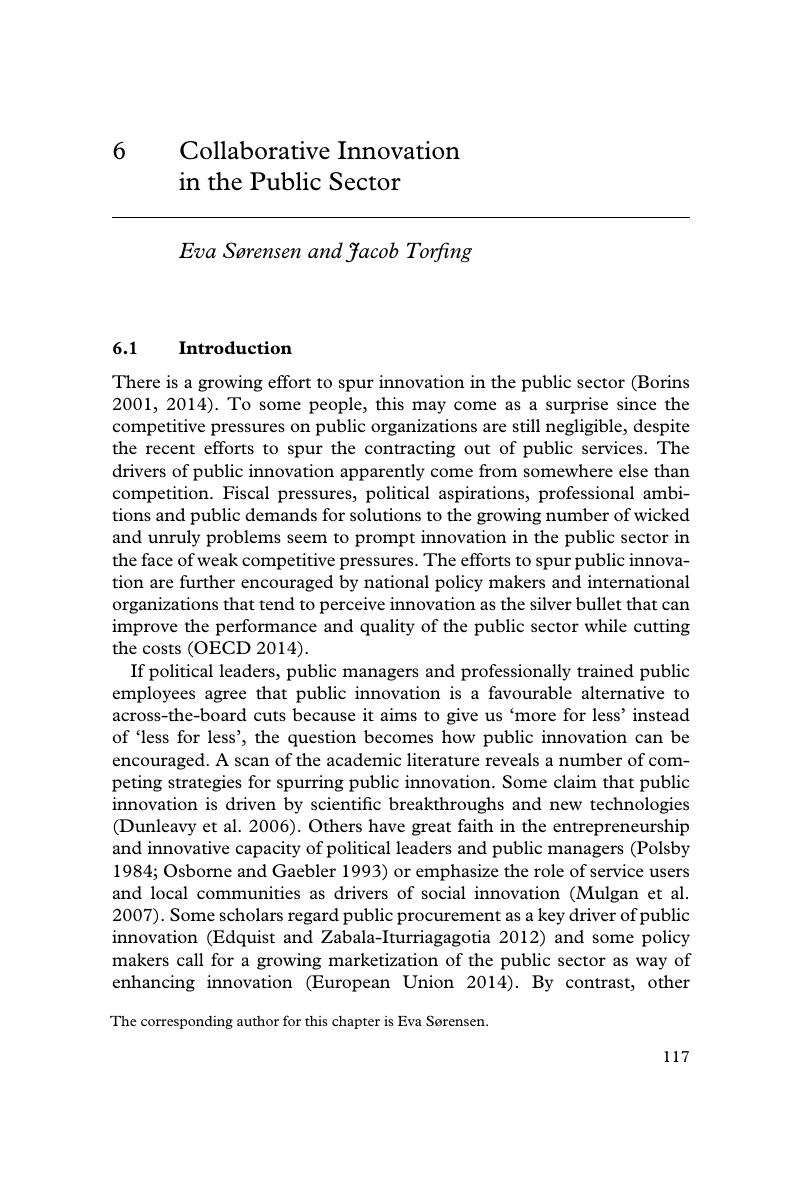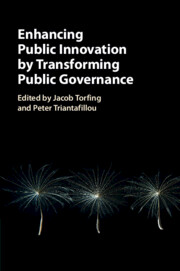Book contents
- Enhancing Public Innovation by Transforming Public Governance
- Enhancing Public Innovation by Transforming Public Governance
- Copyright page
- Contents
- Figures
- Tables
- Contributors
- 1 Enhancing Public Innovation by Transforming Public Governance?
- Part I Linking Governance and Innovation
- Part II Changing Roles of Public and Private Actors
- 6 Collaborative Innovation in the Public Sector
- 7 Public Managers and Professionals in Collaborative Innovation
- 8 Bringing the Resources of Citizens into Public Governance
- 9 The Role of Elected Politicians in Collaborative Policy Innovation
- 10 The Role of Private Actors in Public Sector Innovation
- Part III Transforming Governance to Enhance Innovation
- Index
- References
6 - Collaborative Innovation in the Public Sector
from Part II - Changing Roles of Public and Private Actors
Published online by Cambridge University Press: 05 August 2016
- Enhancing Public Innovation by Transforming Public Governance
- Enhancing Public Innovation by Transforming Public Governance
- Copyright page
- Contents
- Figures
- Tables
- Contributors
- 1 Enhancing Public Innovation by Transforming Public Governance?
- Part I Linking Governance and Innovation
- Part II Changing Roles of Public and Private Actors
- 6 Collaborative Innovation in the Public Sector
- 7 Public Managers and Professionals in Collaborative Innovation
- 8 Bringing the Resources of Citizens into Public Governance
- 9 The Role of Elected Politicians in Collaborative Policy Innovation
- 10 The Role of Private Actors in Public Sector Innovation
- Part III Transforming Governance to Enhance Innovation
- Index
- References
Summary

- Type
- Chapter
- Information
- Enhancing Public Innovation by Transforming Public Governance , pp. 117 - 138Publisher: Cambridge University PressPrint publication year: 2016
References
- 18
- Cited by



